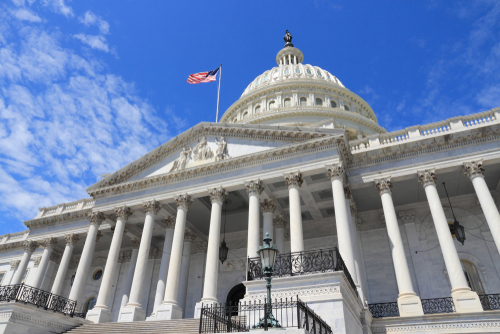
House Republicans TARGET SNAP – Work Rules Expanded!
House Republicans are advancing major reforms to the SNAP food stamp program that would expand work requirements to more recipients and shift costs to states as part of a broader effort to cut federal spending.
At a Glance
- Proposed SNAP reforms would raise the work requirement age limit from 54 to 64 for able-bodied adults
- Recipients with children older than 7 would now face work requirements
- The House Agriculture Committee aims to find $230 billion in spending cuts
- States would eventually cover 5% of SNAP benefit costs starting in 2028
- The legislation is part of a larger Republican reconciliation package supporting Trump’s agenda
Expanding Work Requirements
House Republicans unveiled sweeping changes to the Supplemental Nutrition Assistance Program (SNAP) that would substantially expand work requirements for recipients. The proposal, part of a major budget reconciliation effort, would increase the upper age limit for mandatory work from 54 to 64 years for able-bodied adults without dependents. Additionally, the legislation would extend work requirements to SNAP recipients with children above age 7, a significant change from current policy that exempts most parents from such requirements.
These reforms represent part of a broader Republican effort to reduce government spending while promoting self-sufficiency among benefit recipients. Lawmakers supporting the changes argue that expanding work requirements would help restore SNAP to its original intent as a temporary safety net rather than a long-term subsidy. The House Agriculture Committee, which has jurisdiction over SNAP, is tasked with finding $230 billion in spending cuts from a total target of $1.5 to $2 trillion in government-wide reductions.
Shifting Costs to States
Beyond tightening eligibility through work requirements, the Republican proposal includes significant financial restructuring that would shift some program costs from the federal government to states. Under the plan, states would eventually cover a portion of SNAP benefit costs, beginning with a 5% baseline benefit cost share starting in 2028. This represents a fundamental change to how the program has operated since its inception, with the federal government traditionally covering all benefit costs while states managed administration.
The legislation would also reduce the federal government’s reimbursement rate for states’ administrative costs from the current 50% to 25%. This dramatic reduction would likely force states to either find additional funding sources or implement administrative efficiencies to maintain program operations. Republican supporters argue these changes would promote more responsible program management at the state level while reducing federal outlays.
Advancing Through Reconciliation
The SNAP reforms are moving through Congress as part of a complex budget reconciliation process involving 11 different House committees, each developing legislation within their jurisdiction. The reconciliation mechanism allows Republicans to advance President Trump’s legislative priorities with only a simple majority in the Senate, bypassing the usual 60-vote threshold that would require Democratic support. This approach significantly increases the likelihood of passage through both chambers of Congress.
The various committee portions will eventually be combined into a single massive reconciliation package addressing multiple Trump administration priorities including border security, immigration, taxes, energy policy, defense, and the debt limit. House Speaker Mike Johnson has established an ambitious timeline, aiming to complete the House’s work on the package before Memorial Day. The Agriculture Committee’s SNAP reforms represent just one piece of this broader legislative effort designed to implement substantial government restructuring and spending reductions.




